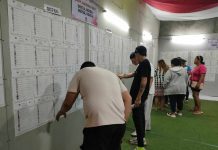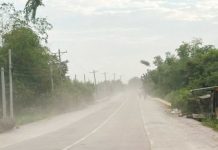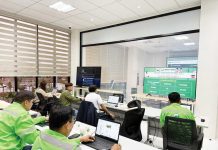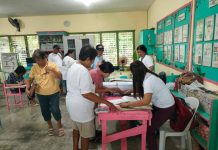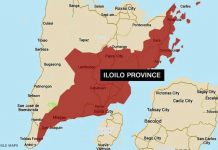
[av_one_full first min_height=” vertical_alignment=” space=” custom_margin=” margin=’0px’ padding=’0px’ border=” border_color=” radius=’0px’ background_color=” src=” background_position=’top left’ background_repeat=’no-repeat’ animation=”]
[av_heading heading=’ State of calamity mulled for red tide-hit villages ‘ tag=’h3′ style=’blockquote modern-quote’ size=’30’ subheading_active=’subheading_below’ subheading_size=’15’ padding=’10’ color=” custom_font=”]
BY GLENDA SOLOGASTOA
[/av_heading]
[av_textblock size=” font_color=” color=”]
Tuesday, September 5, 2017
[/av_textblock]
[av_textblock size=’18’ font_color=” color=”]
ILOILO – The local government of Carles plans to place four island barangays under a state of calamity due to red tide.
The coastal waters of the Gigantes group of islands remain positive for paralytic shellfish poison beyond the regulatory limit, according to the latest (Aug. 30) Shellfish Bulletin No. 30 of the Bureau of Fisheries and Aquatic Resources (BFAR).
But the councils of the island barangays of Asluman, Gabi, Lantangan, and Granada must come up with resolutions about the red tide first before the Sangguniang Bayan could declare a state of calamity, according to Mayor Siegfredo Salagunting Betita.
The waters of Asluman and Gabi are known to produce red scallops, a popular shell delicacy.
According to Betita, the livelihood of “85 percent” of residents in the two island barangays is gathering scallops.
A declaration of a state of calamity would allow the barangays to use their five percent calamity fund to help villagers displaced by the red tide.
Around 2,500 households in the four barangays are into fishing, said Betita.
He estimated his municipality’s loses due to red tide reaching “millions” of pesos. Carles scallops are being exported, he explained.
“Ang buyers ‘di man magbakal kun may red tide,” said Betita.
The town’s daily scallop production is 10 tons to 20 tons daily, according to the mayor.
A kilo costs P110, he said.
Betita said BFAR would also extend help through its Sustainable Livelihood Program while the Department of Social Welfare and Development would distribute relief goods.
BFAR detected red tide toxins in Carles’ waters middle of last month yet. All types of shellfish and shrimps from the area were not safe for human consumption, according to Undersecretary for Fisheries Eduardo Gongona in BFAR Shellfish Bulletin No. 27.
While fish, squids and crabs are safe for human consumption, BFAR stressed they must be fresh and washed thoroughly, and their internal organs such as gills and intestines removed before cooking.
Paralytic shellfish poisoning can be fatal. Symptoms can appear 10 to 30 minutes after ingestion, and include nausea, vomiting, diarrhea, abdominal pain, tingling or burning lips, gums, tongue, face, neck, arms, legs, and toes.
Shortness of breath, dry mouth, a choking feeling, confused or slurred speech, and loss of coordination are also possible.
BFAR said red tide results from the excessive blooming of harmful algae that produce toxins harmful to people and other marine animals.
One of the factors to the occurrence of the blooms is higher than usual temperature of surface water brought about by global warming./PN
[/av_textblock]
[/av_one_full]

